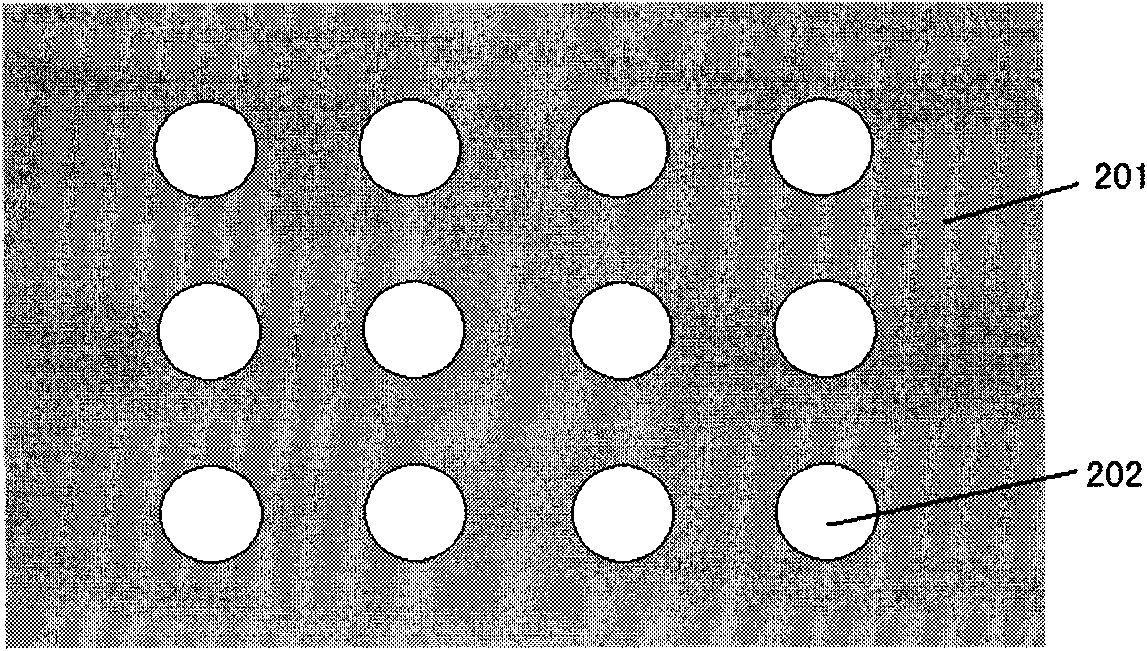Manufacturing process for realizing through silicon via packaging by adopting BCB (Benzocyclobutene) supplementary bonding
A manufacturing process and through-silicon via technology, which is applied in semiconductor/solid-state device manufacturing, electrical components, circuits, etc., can solve the problems of low bonding strength, high metal bonding strength, and high cost of sputtering metal, and achieve a reduction in process Cost, improved yield, and simple process
- Summary
- Abstract
- Description
- Claims
- Application Information
AI Technical Summary
Problems solved by technology
Method used
Image
Examples
Embodiment Construction
[0014] In order to fully demonstrate the advantages and positive effects of the present invention, the present invention will be further described below in conjunction with the accompanying drawings and embodiments.
[0015] exist figure 1 In this method, a layer of Au layer 102 with strong oxidation resistance is sputtered on one side of the bare support wafer 101 with a thickness of about 100-200 nm. The role of this metal layer is to provide a seed layer for TSV electroplating Cu.
[0016] exist figure 2 In this method, a layer of BCB103 is coated on the metal layer 102 of the bare support wafer 101, and the thickness of the BCB is about 2-4 μm. The BCB is shaped by photolithography, so that the BCB at the position 104 to be bonded to the TSV through hole is removed.
[0017] exist image 3 in SiO 2 As a mask, DRIE is used to etch the front side of the TSV wafer 201 to form a TSV array pattern 202, but the TSV wafer is not completely etched through, leaving a certain ...
PUM
| Property | Measurement | Unit |
|---|---|---|
| thickness | aaaaa | aaaaa |
| thickness | aaaaa | aaaaa |
Abstract
Description
Claims
Application Information
 Login to View More
Login to View More - R&D
- Intellectual Property
- Life Sciences
- Materials
- Tech Scout
- Unparalleled Data Quality
- Higher Quality Content
- 60% Fewer Hallucinations
Browse by: Latest US Patents, China's latest patents, Technical Efficacy Thesaurus, Application Domain, Technology Topic, Popular Technical Reports.
© 2025 PatSnap. All rights reserved.Legal|Privacy policy|Modern Slavery Act Transparency Statement|Sitemap|About US| Contact US: help@patsnap.com



